Another FIRST for BRracing. The design, development, and implementation of a complete “BOLT-IN” roll bar / harness bar for the Nissan GTR.
As has been the case with the other systems BRracing has developed (BMW E46 M3, BMW E82 135i, MINI R53 MCS, MINI R56 MCS….and soon to come our Porsche Cayman system), we tightly adhere to the requirements that the complete system must be a “bolt-in” system, requiring NO new holes or drilling to implement the solution, so that it can be installed and taken out at any time without harming the value of the car, but providing the ultimate in track solutions.
See our notes below on the complete build and design considerations.
Here is the car as it is being prepared for surgery. Always meticulous preparation and care, even the little details ensure that the project goes well.
We are doing both the wiring for the rear view camera and the interior roll bar / harness bar at this time, so the rear bumper cover needed to come off, all the interior pieces of the trunk, and then the whole interior (all seats, seat cushions, backs, plus even the carpet and sound deadening).
In the design of a new roll bar / harness bar, this is one of the most critical steps. The discovery of what the interior floor is made of, and the shapes, existing anchor points, drain plugs. Since we are making the roll bar/harness bar to our standard specs, where the tolerances are very tight, but where we use ONLY factory, existing mounting and bolt locations for securing all elements of the bar, much time is spent in the discovery stages. We need to pull back everything, study all areas, look for the extra fasteners and the main frame support rails. We take note of all the seat belt anchor points, as we know from our prior cars how secure and strong those locations are.
Then, we start determining the angles and clearances needed for the seats. Since this is a daily driver / street car, the requirement is that the seats must be able to fit any passenger and driver, and must be able to work through the full angle and reach of articulation of the seats, fore/aft, as well as rake. What makes the GTR most challenging for the bar is how far back the front seats are compared to the location of the B-pillar. Normally, the B-pillar is behind the front seats. Not the case in the GTR. The upper portion of the B-pillar is right above where the drivers and passengers heads are located. Therefore, the main hoop has to have a severe incline towards the back. This therefore changes the whole angle and approach for the down bars and supports. We have to maintain certain angles to have the triangulation needed to have the strength to support the car in a theoretical roll over. There is discussion also about where the rear shock towers are located. Should we run the down bars to the upper shock tower locations. Should we run the down bars to the lower frame support? Should we do both? Do we have clear access? What about the location of the X-bars if we do any of those locations….will that interfere with rear vision, site lines out the rear quarter windows? Our objectives must be adhered to….we have to remain bolt in, and we have to have clear vision at all times in all directions. The bars should seem to disappear inside the cabin. Yet, we can’t place them to obtain site lines, and not have the proper level of support and anchor. We measure and determine the angle of inclination of the main hoop versus the down bars. We also must consider how far back the main horizontal harness bar go to clear the seats and provide the needed clearance for the harness adjustment. What height must that harness bar be located at as well. What are the various seat types that might be used besides the stock seats? What is the seat shoulder harness opening height?
Plus, we need to make this easy to accomplish, as that is also one of the goals, this can’t take miracles to install. That last point is the last big hurdle we run into in the design of the project. Where we want the main hoop base plate to go…..if we put it there, then we can’t swing the main hoop into place to install. We would have to install the cage in pieces. Ideas fly from all directions…what about segmenting the main hoop…..arguments erupt as to strength properties of a solid main hoop versus a segmented main hoop. What if we don’t run the main hoop all the way down to the floor like seen in the Porsche cars? More arguments erupt. Like many great designs, after all the wild ideas and assumptions are laid out, one concept quickly emerges that seems perfect….and achieves all the objectives….simple, easy to install, and maintains all the strength requirements.
In the picture below, this is the passenger side rear seat foot well. We want the main hoop base to be right at the lower left corner in the picture, right where the white wrapping on the electrical cable bundle are located. We also need the hoop to angle up and rearward to clear the seats given how far back the front seats travel. We mock up a main hoop, and then place the front seats back in the car…..and viola….victory in the design.
There are several roll bar / harness bars out there for the GTR already, but each to us was a compromised design….each had about 80% of what you would want, but not 100%. We NAIL it, and get all 100% of the design requirements incoporated…WOO HOO.
After the mock up, we go to creating the first prototype. We were able to make the clearances VERY tight, not touching any panel, but not more than fractions of an inch at any location. No major gaps….not even across the main headliner. Just like racing organizations, the main bar only has four or less bends……again, other designs have more that we have seen, which breaks a fundamental rule and lessens the overall strength of the solution.
The whole assembly is made of 4130 Chrom-Moly tubing. TIG welded. Light, strong.
We use our standard male/female solid fittings. Where these insert into the main tubes, they extend about 3″ into the bar, essentially making it a solid bar at all connecting points. The TIG welding is flawless again (great work team). The net is that no part of the bar is off by more than 1/64″….very tight. No magic finesse required to make this all fit together. You put the pieces in…..and just like a great LEGO set, they all connect right up. We use only Grade 8 or higher fasteners as well, to add to the shear strength at those connecting points. Solid base plates, completely welded at the circumference. No pops, no heat sink holes in the weld seams.
No machining or trimming of the parts….they fit together perfect. SNAP.
We convert the whole prototype into the CAD system for replication, and output to the tube bender.
Even the clearance between the X-brace and the center console is down to fractions of an inch. Perfect.
Each of the down bars base plate mounts directly into the frame rail where there was the additional support for the rear seat belts.
This also allows us to push the down bars as far to the outside of the main hoop as possible, another key consideration….but this will also have another benefit we will see later in the install. Again, NO SLOP in the holes…no slack or extra room making it easier to install later…..they fit right where they are supposed to be. Looks just like it was made for the manufacturing bolt hole locations.
Now, on the main hoop base plate, we use the experience we have from our BMW, MINI, and Porsche bars. Plus, we add the little tricks that add to the flexibility of the installation for all customers. Anyone know why we have that extra little flange between the main hoop and the side anchor plate? And why is it on the front side of the main hoop?
All pieces were tested, installed, tested again. So, with a finished design, and all elements that we need, including harness anchor points incorporated, its off to get the new set powder coated. Here, below, is the new bar, back from the powder coater, and you can see how even the rear base plate has a small cut-out to mimic the factory locations of other hardware. No short cuts, no (it won’t be seen by anyone, so who cares……) we care at about all elements of design. No easy cutting of square base plates…we laser cut the plate to the exact template design.
The bar went in like SNAP. Now, with the bar in, we start to work on the finishing touches. We want this to look just like a factory designed and installed bar.
Pay close attention to the rear seat cushions. They fit in perfectly, using the original factory seat anchor elements. We took the rear seat cushions out, and start the fabrication of factory carpet to cover those areas…..saves a little weight, but now looks amazing tidy and neat.
Here is where the attention to detail start to really pay off in the finish work. Due to the perfect tolerances of the main hoop, we can tuck the main hoop right in along the B-pillar, and get the carpet to curve to the roll bar directly.
For this car, after discussion with the customer, and how we wanted the outer lap belt to secure with the main roll bar, we even added the location for the snap ring….look down closely in the lower left side of the picture below. Doesn’t stick out, but perfectly integrated, waiting to have the outer lap belt clicked in.
This is how tight the main hoop sits along the B-pillar, and how the carpet hugs the surface….looks factory to us.
Here is the opposing (drivers) side. You can get a better idea of the rear angle that the main hoop has to reside at. But, also how the main hoop just disappears into the corner….magic.
No slop or gaps at the top either.
Back in with the front seats and the harness sets installed. We think this is the way NISSAN would want a GTR-S to come.
In the midst of doing the work for the roll bar, we also were running the cables for the rear view camera (that fully integrates into the NAV system, so that when you put the car in reverse, the NAV screen converts to the rear view camera that we mounted in the rear bumper cover right above the license plate). We also added the cables for the Chase CAM system, and TrakMate data acquisition system. We used the center cup holders in the rear seat area to make a custom holder for both items. Allows us to hide their cables, and makes them easily viewed and accessed by either the driver or passenger from the front seats. No craning your neck to see if the units are on or if video is active. Plus, not in the way down in the foot wells either…great location, and no wires showing. Both are “switched” powered as well (power comes on when you start the car).
Another complete, successful project and build. And, as always, the car has been fully tested on the street, and taken to the track. Solid all around, no undo sounds, or tweaks, perfect fitment and ease of use, and factory integration appearance. Come see what BRracing can create for you.



BRracing – performance beyond expectations
408-356-1515
www.brrperformance.com
See also the full project write up on our web page under the “PROJECTS” page.
























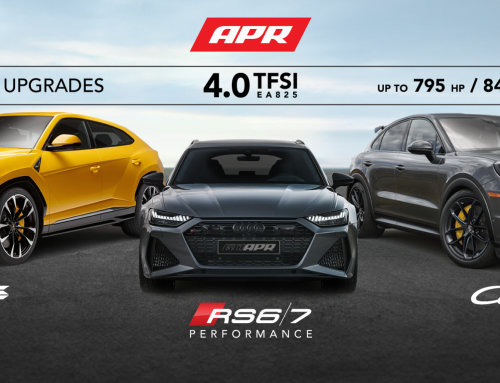
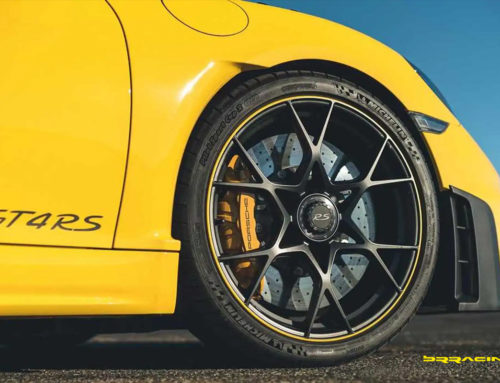
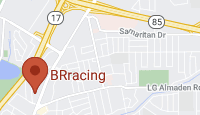
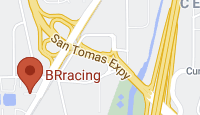
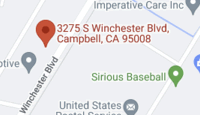
I am interested in purchasing this nissan gtr x style roll cage how much and how long?please call me or email back at 7782233999